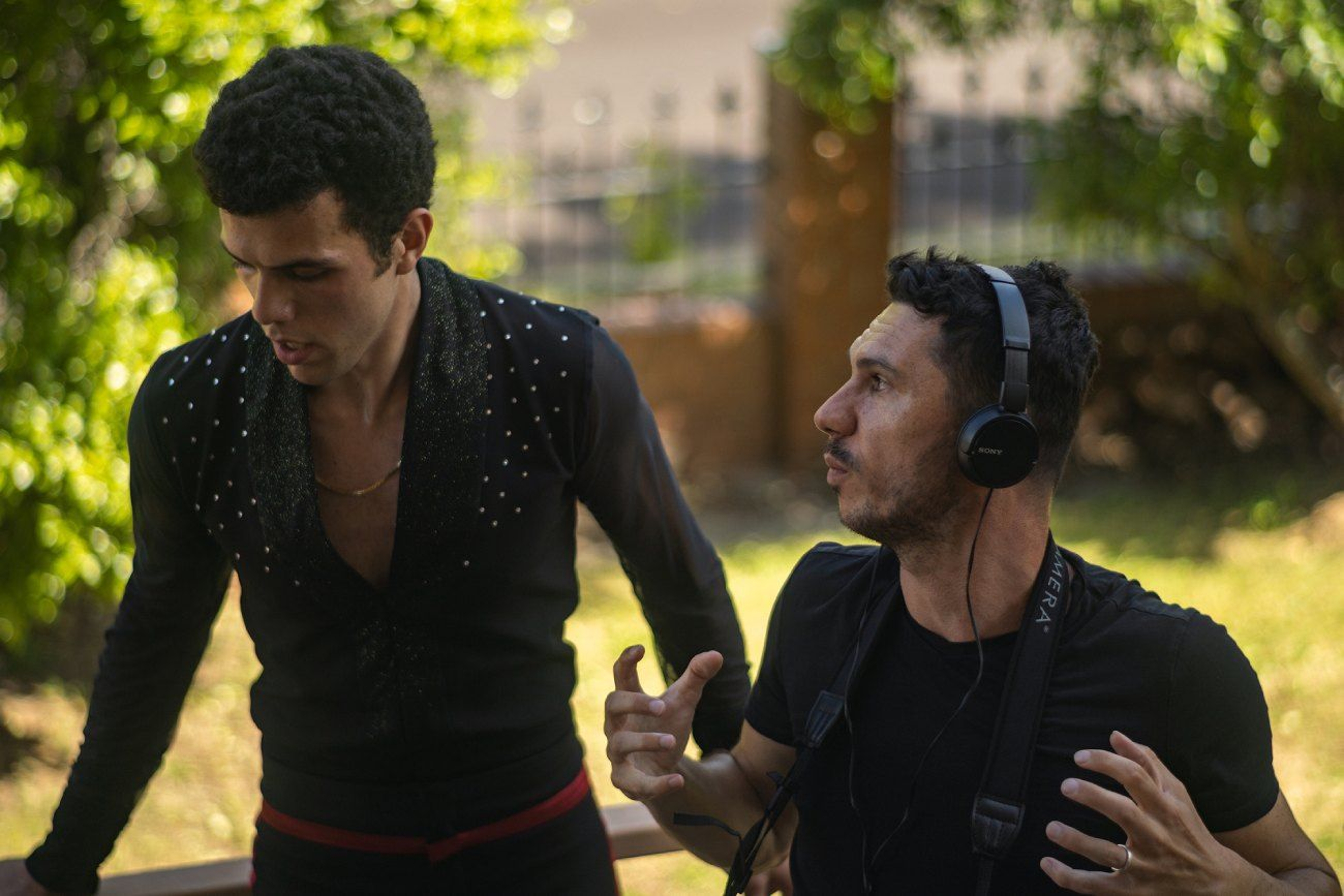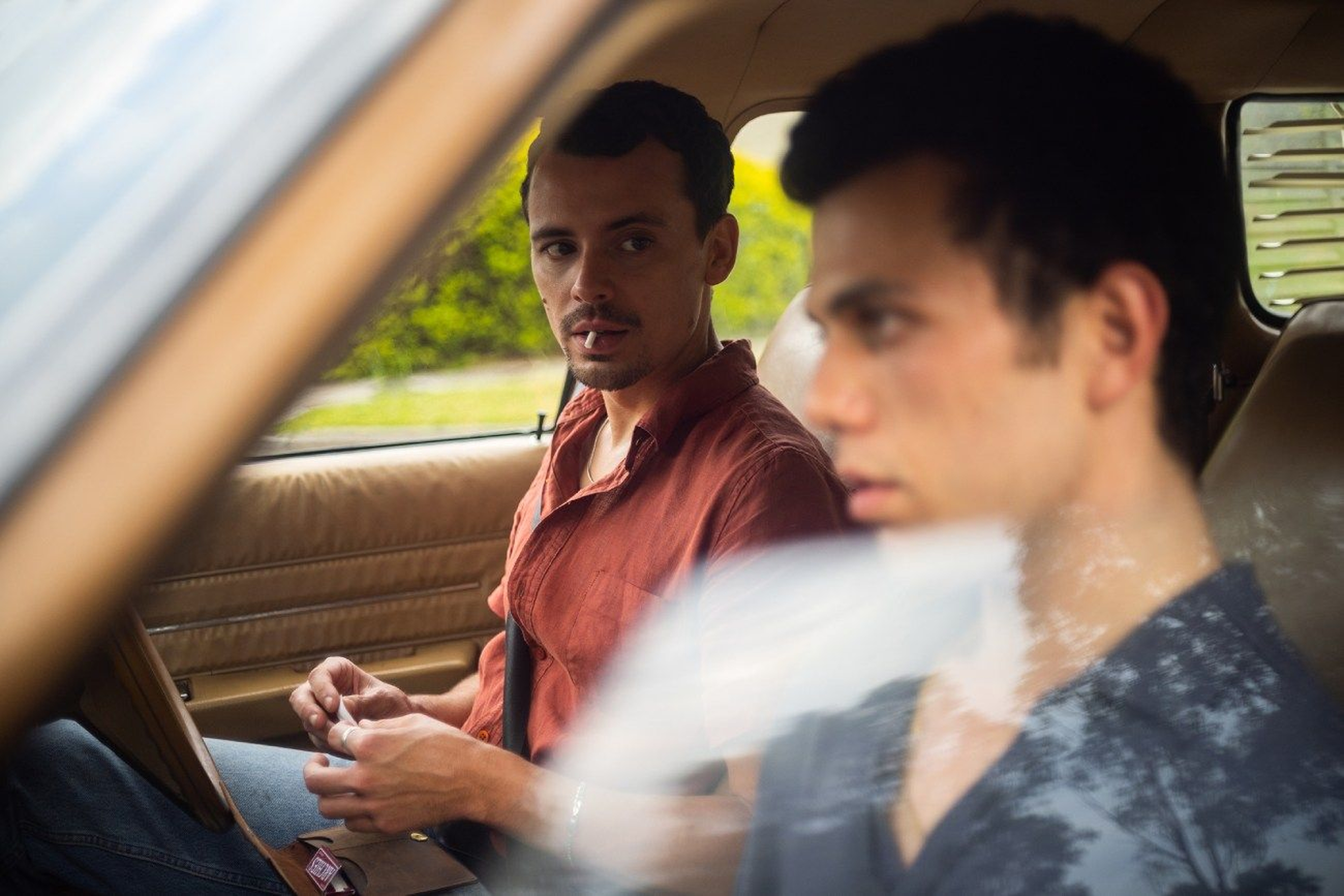Goran Stolevski’s Of An Age chronicles the slow, sweet awakening of romance during a brief 24-hour encounter in Melbourne in 1999. When Kol (Elias Anton) tries to help his ballroom dance partner, Ebony (Hattie Hook), who is stranded at a local beach, he ends up meeting her brother, Adam (Thom Green). Driving about town discussing Borges, Wong Kar-Wai, and themselves, the two young men find a connection that ignites into something unexpected and unforgettable. Indeed, when the two meet again 11 years later, that connection still lingers.
“Shot with an eye for a warm and inviting intimacy (courtesy of Matthew Chuang’s cinematography)” writes Variety, the film captures the visceral experience of falling in love.
Describing his work on Stolevski’s debut feature, Showbiz CheatSheet wrote, “Matthew Chuang’s gorgeous cinematography elevates every frame.” Adapting a similar visual strategy for Of An Age, Chuang worked closely with Stolevski to capture the immediacy of the actors’ performances and the world around them. In his films, from Justin Chon’s Blue Bayou to Stolevski’s features, Chuang demonstrates a deft ability to reflect the inner lives of characters with his camera movement and framing.
We spoke with Chuang about working with Stolveski, imbuing the Melbourne locations with a dreamy quality, and using cutting-edge technology to enhance their naturalistic look.
The official trailer for Of An Age

Of An Age's director of photography Matthew Chuang
After shooting You Won’t Be Alone, how was it working with Stolveski again?
We shot Of An Age in a similar way except, of course, we were in 1999 Melbourne and not 18th century Macedonia. And this is a much more scripted story. But we still approached it in a naturalistic manner that was grounded in the characters. We shot with the same lenses, used a hand-held camera, and our lighting was very naturalistic.
In this film, as well as in You Won’t Be Alone and Blue Bayou, your cinematography has a very emotional, lyrical quality.
I'm drawn towards working with filmmakers like Goran and Justin [Chon], who push that in their films. We try not to force anything with the camera. The style is always based on what the characters are doing. With Goran, many of our creative decisions reflect the dynamics of the actors. We try to respond intimately to what they are doing. My presence with the camera is always there to support that sense of intimacy.
The story takes place in 1999 and 2010. Did you visually attempt to distinguish these two time periods?
Initially we widened the frame and aspect ratio for the later part. But when Goran looked at the footage, he felt the wider frame was putting too much space between the actors. So we reframed the 2010 section back to a standard 1.333:1 aspect ratio in post. What really surprised all of us was how great the actors were in conveying that time difference all by themselves. While watching the edit for the first time, it was such a big jump but it felt quite natural.
While the 1999 feels very visceral and immediate, it also has this dreamy quality to it.
Goran loves to shoot the actors quite close with the long lenses, so they are very tight but the background tends to blur out in a very interesting way. It really allows you to focus on the actors and their performance but there's a painterly quality to what is behind them. I think that adds to the dream-like quality of the film.

Kol (Elias Anton) and writer-director Goran Stolveski on the set of Of An Age
Stolevski and you have a very instinctive approach to shooting.
Something we both learned in making You Won't Be Alone was to be more instinctual, to not be afraid of not knowing what to do when you come on set. Bethany [Ryan, the production designer,] set up spaces that feel very real for the actors to move around in, and Goran guides them to get what he needs from the scene. I position the camera to best capture how the actors are within that space and within the light and framing. Do I show a lot of their face? Do I silhouette them? Do I hide them or do I reveal them and let them be very present? It is all very instinctual. Whatever plans we have made, once the actors are there, everything changes. For lighting, I don’t have many stands or lights inside that space. We usually light from outside windows, hide them in the roof, or work with the production design to use practical lamps on set. That gives us the freedom to follow the actors.
Are there particular films or photographers that influence your style?
We were really inspired by Wong Kar-Wai’s Happy Together, which they even talk about in the film. Lucrecia Martel is a filmmaker we've looked at in the past. And Before Sunrise, Before Sunset, and Before Midnight films were an inspiration, but they didn’t influence how we shot. In terms of photography, I've always been a big fan of Bill Henson and Nan Goldin. Todd Hido, who I recently met, is also really great. But these artists weren’t really specific to this film. They were more general.
The film captures such a specific sense of place and time.
We sought out the right locations in the suburbs of Melbourne like Ansonia and Altona, because we wanted to have a strong sense of place. A lot of the locations were guided by Goran’s childhood. He would tell us things like, "This beach feels right" or "This place reminds me of when I was 18."

Kol (Elias Anton) and Adam (Thom Green) in Of An Age
A lot of the film is shot in a car. How difficult was that?
We did all the car stuff on location. When we were in the back of the car, the actors were driving. We had a VENICE camera that was super stripped down so that I could move inside the car a little bit more. When we were in front of the actors, the car was pulled on a process trailer and we had two cameras on them. One of the more interesting scenes in the car is when Kol and Adam spend time together very intimately at sunrise. To give the actors enough time and sensitivity, we shot that on Dreamscreen or what they call a volume. It’s the same technology they use for big projects like The Mandalorian. We used a photo from the lookout location that we liked for the backdrop and they used that to create the background on huge LED screens. It worked out really well.
What do you hope people take away from the film?
The first time I read the script, it reminded me a lot of the relationships that I’ve been in and which shaped me as a person. It reminded me how even a small encounter can shape you as a person. I would love for the audience to experience that again, to be able to look back and be grateful for those experiences, no matter how much they might have hurt at the time.
This interview has been edited and condensed for clarity.
